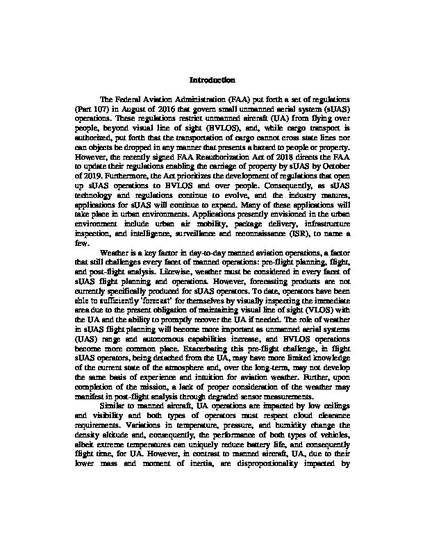
The Federal Aviation Administration (FAA) has put forth a set of regulations (Part 107) that govern small unmanned aerial system (sUAS) operations. These regulations restrict unmanned aircraft (UA) from flying over people and their operation to within visual line of sight (VLOS). However, as new applications for unmanned aerial systems (UAS) are discovered, their capabilities improve, and regulations evolve, there is an increasing desire to undertake urban operations, such as urban air mobility, package delivery, infrastructure inspection, and surveillance. This built environment poses new weather hazards that include enhanced wind shear and turbulence. The smaller physical dimensions, lower mass and reduced ground speed of UA make them more susceptible to these hazards than their manned counterparts and can have a significant impact on their performance, endurance and the likelihood of accomplishing the mission. Due to current restrictions, very few flight hours have been accumulated confronting these unique weather challenges. In the absence of this data, this article explores a diverse body of literature that analyzes urban flow and discusses the relevant insight it provides to sUAS operations.
Available at: http://works.bepress.com/kevin_a_adkins/13/
